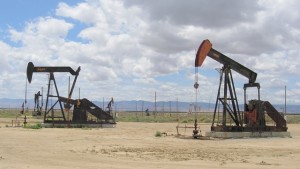
This week a consultant's report basically stated that hydraulic fracturing in one of the country's largest urban oilfields is not harmful. The study will arouse lots of comment by proponents and opponents of "fracking," but both sides will find limited support for their arguments.
The oilfield in question is the Inglewood field, which has been drilling and pumping in the Baldwin Hills, in Southern California, for 82 years as the cities of Los Angeles County engulfed the country around it on all sides. Now it's flanked by the 10 and 405 freeways and overlooks Culver City, east of Santa Monica. It makes a good test case for the future, because oil and gas producers will not disappear as cities expand around them. Both parties will need to learn how to cooperate.
The Baldwin Hills Community Standards District is a set of regulations recently created by Los Angeles County that governs operations in the Inglewood field. Part of a lawsuit settlement obliged the field's current operator, Plains Exploration & Production Company or PXP, to carry out a study of its most advanced fracking technology. The final report from that study was released to the public yesterday and can be downloaded from inglewoodoilfield.com.
Fracking is a set of oilfield techniques in which rock is gently shattered and grit washed into the resulting microcracks. The grit holds the cracks open allowing oil and gas to be pumped out. For the study, PXP tested two varieties of fracking on each of two vertical wells in the Inglewood field: "high-volume" and "high-rate gravel pack" techniques. Both are appropriate for the extremely fine grained shale rock that fracking is designed for.
Naturally, everyone at PXP was on their best behavior for these tests, going by the book in every respect. As a result, and to no one's surprise, the wells were properly sealed, the petroleum-producing zone (7500 feet below the fresh groundwater of the Los Angeles basin) did not contaminate anything, no earthquakes were triggered, the ground did not shift by a millimeter, the noise and pollution were insignificant, and no public-health impact was detected.